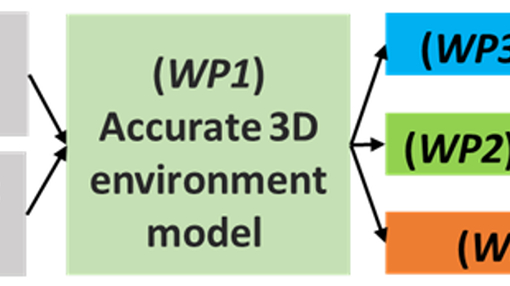Hao Cheng is an Assistant Professor at the Department of Earth Observation Science at ITC Faculty Geo-Information Science and Earth Observation from the University of Twente, the Netherlands.
Prior to this appointment, he was a researcher and MSCA posdoctoral fellow at the ITC Faculty Geo-Information Science and Earth Observation, University of Twente, the Netherlands, and a posdoctoral researcher at the Institute of Cartography and Geoinformatics, Leibniz University Hannover, Germany.
He earned his M.Sc. degree in Internet Technologies and Information Systems from TU Braunschweig, Leibniz University Hannover, TU Clausthal, and University Göttingen, Germany, in 2017, and his Ph.D. at the Faculty of Civil Engineering and Geodetic Science, Leibniz University Hannover, Germany, 2021.
His research interests include accessible and responsible GeoAI, deep learning, with a focus on Perception, Reconstruction, and Motion Modeling.
Expertise
Computer Science
- Models
- User
- Autonomous Driving
- Deep Learning
- Learning Approach
- Communication
- Prediction Model
Social Sciences
- Traffic
Organisations
- Faculty of Geo-Information Science and Earth Observation (ITC)
- Scientific Departments (ITC-SCI)
- ITC-TECH (ITC-SCI-TECH)
Hao Cheng's interests include accessible and responsible GeoAI, deep learning, with a focus on Perception, Reconstruction, and Motion Modeling.
The ongoing reresech projects include:
- Bias-aware Visual Perception under Domain Shift
- Spatio-Temporal Modelling for Odometry
and Registration
- Multimodal Motion Prediction
- Vectorized Map Extraction from Aerial Imgery
- Large Structural Health Monitoring
Publications
2025
2024
Research profiles
I acquired my M.Sc. degree (with distinction) in Internet Technologies and Information Systems from TU Braunschweig, Leibniz University Hannover, TU Clausthal, and University Göttingen, Germany, in 2017, and Ph.D. (with distinction) at the Faculty of Civil Engineering and Geodetic Science, Leibniz University Hannover, Germany, 2021.
Courses academic year 2025/2026
Courses in the current academic year are added at the moment they are finalised in the Osiris system. Therefore it is possible that the list is not yet complete for the whole academic year.
Courses academic year 2024/2025
HORIZON-TMA-MSCA-PF-EF VeVuSafety-101062870: Traffic safety is the fundamental criterion for vehicular environments and many artificial intelligence-based systems like autonomous vehicles. There are places, e.g., intersections and shared spaces, in urban environments with high risks where vehicles and VRUs directly interact with each other. By advancing state-of-the-art artificial intelligence methodologies, this project VeVuSafety aims to build an end-to-end deep learning framework to learn road users’ behavior in various mixed traffic situations for the safety of vehicles and VRUs.
Current projects
Address

University of Twente
Langezijds (building no. 19), room 1308
Hallenweg 8
7522 NH Enschede
Netherlands
University of Twente
Langezijds 1308
P.O. Box 217
7500 AE Enschede
Netherlands
Organisations
- Faculty of Geo-Information Science and Earth Observation (ITC)
- Scientific Departments (ITC-SCI)
- ITC-TECH (ITC-SCI-TECH)
